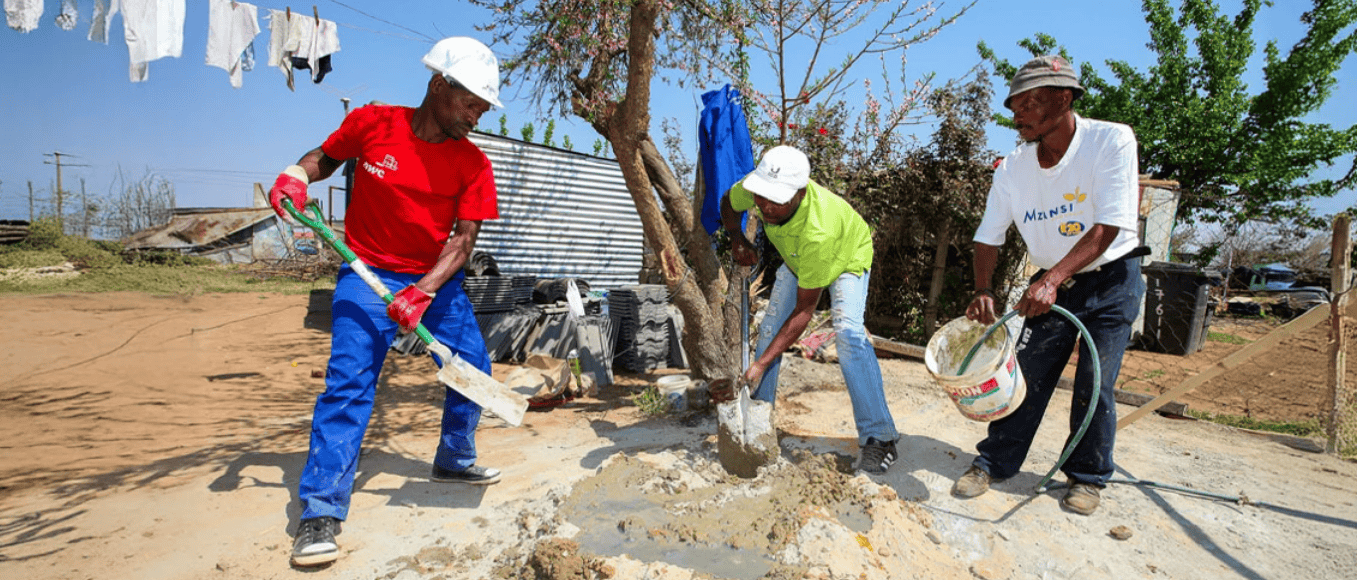In 2021, the US temporarily expanded the Child Tax Credit, a programme intended to support the income of families with children. This column shows that the US was comparatively less successful in reducing child poverty through its redistribution system prior to the reform. The temporary expansion brought it more in line with programmes in other high-income countries in terms of generosity and also in not imposing work requirements, resulting in a significant increase in the impact of redistribution on poverty reduction. The findings reinforce the importance of well-designed and well-targeted unconditional child benefit programmes for addressing child poverty and enhancing overall family wellbeing.
In 2021, the US implemented a generous but temporary expansion of the Child Tax Credit (CTC), an income-tested refundable tax credit programme intended to support the income of families with children. Given that the US has historically favoured income transfer programmes that prioritise the maintenance of work incentives (Lochner 2021, Stabile and Milligan 2009), a noteworthy aspect of the 2021 CTC reform is the removal of employment conditions from eligibility criteria.
Owing to the well-established research on the intergenerational cycle of poverty and socioeconomic link between child and adult outcomes (Currie 2008), this radical change in US policy has led to a renewed interest among scholars and policymakers in the use of family benefit programmes to reduce poverty and improve child wellbeing (Aizer et al. 2024, Pignatti 2023, Parolin and Filauro 2023, Pilkauskas et al. 2023, Pilkauskas et al. 2022, Schanzenbach and Strain 2024). Indeed, while the 2021 reform substantially improved targeting of the CTC to the neediest families, it also made the programme more similar to child benefit programmes in high-income countries around the world.
In a new paper (Koebel and Stabile forthcoming), we provide a comprehensive international review of child tax credits, comparing the US CTC before and after the 2021 expansion to analogous child allowance programmes in a select group of high-income countries, including Australia, Canada, Denmark, Finland, France, Germany, Greece, Ireland, Japan, New Zealand, Poland, Spain, Sweden, and the UK. Using the OECD tax-benefit model, we also simulate child benefits in the selected jurisdictions to examine differences in the generosity of programmes across the income distribution. Our paper concludes with a review of the international empirical literature investigating the effects of child tax benefits on income and poverty, education and child well-being, maternal health and employment, and household expenditures.
Child poverty rates and the role of redistribution
Although the reduction of child poverty is a widely shared objective across high- and low-income countries, there remains considerable variation in child poverty rates among OECD member nations. As illustrated in Figure 1, OECD data suggest that relative child poverty rates range from under 5% in the Scandinavian countries to between 12% and 15% in Germany, France, and the UK, and more than 15% in Italy, Israel, and Spain.
Figure 1 Relative income poverty rate (after taxes and transfers), child and total population, high-income OECD countries


Note: Relative income poverty rate based on 50 percent of median income. Most recent data available used. Data refer to 2021 for Finland, Norway, Sweden, Latvia, Netherlands, and Costa Rica. Data refer to 2020 for Slovenia, Poland, Canada, Ireland, Czech Republic, Korea, Hungary, Estonia, Lithuania, United Kingdom, Austria, Australia, New Zealand, Portugal, Greece, Luxembourg, Italy, Israel, Mexico, and Spain. Data refer to 2019 for Denmark, Switzerland, France, Germany, Slovak Republic, and Turkey. Data refer to 2018 for Japan. Data refer to 2017 for Iceland.
Source: Authors’ tabulations using the OECD Income Distribution Database (2023).
While a multitude of factors contribute to cross-country differences in child poverty, such as the prevalence of single mothers and childcare availability, redistributive measures also play an important role. The significance of redistribution for poverty reduction is evident in Figure 2. With the exception of Greece and Switzerland, child poverty rates are significantly lower than they would otherwise be in the absence of taxes and transfers. For instance, Finland’s tax and transfer system reduces child poverty by as much as 80%, while Japan’s has a more modest impact, reducing poverty by roughly 2%. Figure 2 also shows that the US was comparatively less successful in reducing child poverty through its redistribution system prior to the 2021 CTC reform. However, during the period of the CTC expansion, the impact of redistribution on poverty reduction increased significantly, with the US outperforming 14 other OECD countries.
Figure 2 Impact of taxes and transfers on relative child poverty rate, percent difference, high-income OECD countries


Note: Relative income poverty rate based on 50 percent of median income. Most recent data available used. Data refer to 2021 for Costa Rica. Data refer to 2020 for Finland, Canada, United Kingdom, Netherlands, Norway, Sweden, Australia, New Zealand, Latvia, Korea, and Italy. Data refer to 2019 for Hungary, Denmark, Belgium, Estonia, France, Slovenia, Czech Republic, Germany, Austria, Lithuania, Luxembourg, Slovak Republic, Portugal, Spain, Israel, Turkey, Switzerland, and Greece. Data refer to 2018 for Ireland, Poland, Italy, and Japan. Data refer to 2017 for Iceland.
Source: Authors’ tabulations using the OECD Child Well-Being Data Portal (2023).
Comparative analysis of child benefit programs in select OECD countries
Our comparative analysis reveals considerable variation in the design of child benefit programmes across countries, particularly in terms of generosity, universality, phase-out rates, and overall level of redistribution. For illustrative purposes, in addition to the countries listed above, in Figure 3 we present simulated child benefits (aimed at single parents with one child under the age of 6) across the income distribution for six countries – Canada, Denmark, France, Germany, Ireland and Poland – in comparison to the pre- and post-expanded US CTC. Relative to the US CTC, there are several noteworthy differences.
Figure 3 Family benefits in select OECD countries, single parent, one-child under age 6


Source: Authors’ calculations based on the OECD tax-benefit model (2023), Version 2.5.3.
First, the majority of countries examined provide more generous child benefits than the 2019 (and current) CTC. Child benefits in Canada, Ireland, and Poland are especially generous, particularly for families at the bottom of the income distribution. On average, child benefits across all countries included in our review fell in the $3,000–5,000 range, which is closer to the temporarily increased benefit level of the 2021 CTC.
Second, excluding the 2019 US CTC, all countries examined in our review provide unconditional child benefits that do not impose work requirements. This contrasts with the 2019 US CTC model, where families do not receive the maximum benefit amount until household income exceeds $25,000. The absence of work conditions in the 2021 US CTC, and the child benefit programmes of other countries, has important economic implications for families in deep poverty who may be insecurely attached to the labour market and have limited access to other sources of income.
Finally, all programs, excluding the 2019 US CTC, pay child benefits regularly throughout the year, with payment frequencies ranging from biweekly to monthly. As noted by Bellisle et al. (2023), the periodic and frequent payment of child benefits is generally preferred to lump-sum payments (as in the 2019 US CTC model), as the former approach better aligns with the regular financial demands faced by low-income families.
Review of the international evidence on child benefits
Child benefits have been the subject of extensive evaluation in a number of countries. Our literature review focuses on the empirical evidence coming from three countries – Canada, Germany, and Poland – each of which has implemented substantial reforms to their child benefit programmes over time (a more comprehensive review of child benefits from additional countries, including Sweden, the Netherlands and Japan, is available in our paper cited above and related online appendix). Our findings are summarised below.
Overall, the evidence suggests that family cash benefits play a significant role in reducing child poverty and improving child wellbeing and educational outcomes. Child benefits also contribute to food security and have positive impacts on child development, child mental health, and maternal stress and health.
The evidence on maternal labour supply, however, is more mixed. While some studies find positive or no impact on labour supply, several suggest that child benefits may reduce maternal labour supply, though the extent of this negative effect depends on factors such as marital status, household income, programme characteristics (such as universality) and integration with welfare.
Whether child allowances are spent in a way that directly benefits the intended recipients (i.e. children) is unclear. Studies examining how families allocate child benefits in their financial budgeting yields mixed results. One important take away from this literature, however, is that there is very little evidence that families spend child benefits on ‘vices’ and that child benefits may even reduce spending on such goods by alleviating financial stress.
Policy implications
Our international review of child benefits reinforces the importance of well-designed and well-targeted unconditional child benefit programmes for addressing child poverty and enhancing overall family wellbeing. The documented positive effects of child benefit programmes across various sociodemographic outcomes highlights the importance of continued international efforts to enhance and implement effective child benefit policies.
Source : VOXeu



































































